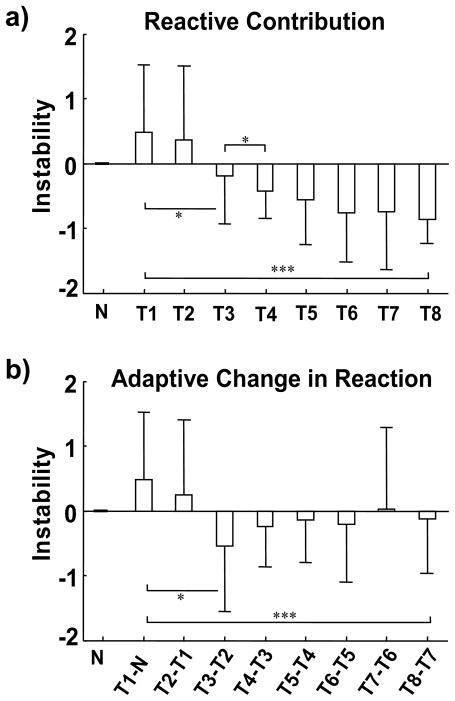Figure 7.
Estimated (a) reactive contribution and (b) its adaptive change to reduce trip-related instability (from the first trip trial, T1, to the last, T8). a) The pre-trip instability (which reflects the effect of feedforward control) is subtracted from the post-trip instability to estimate the net reactive contribution in each one of these trials. b) The adaptive change in reactive control of stability is quantified as the trial-to-trial changes in the reactive contribution (*** p < 0.001; * p < 0.05). In comparison, the need for reactive response and the trial-to-trial changes during regular walking trials are minimum and negligible during preceding walking trials (N and the trial before). Positive means an increase and negative, a reduction in instability.

